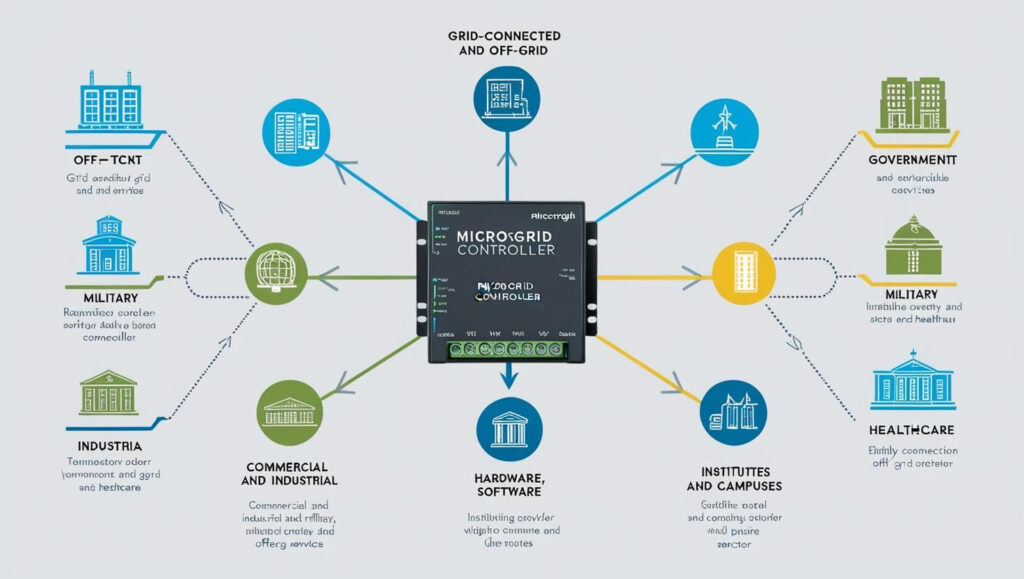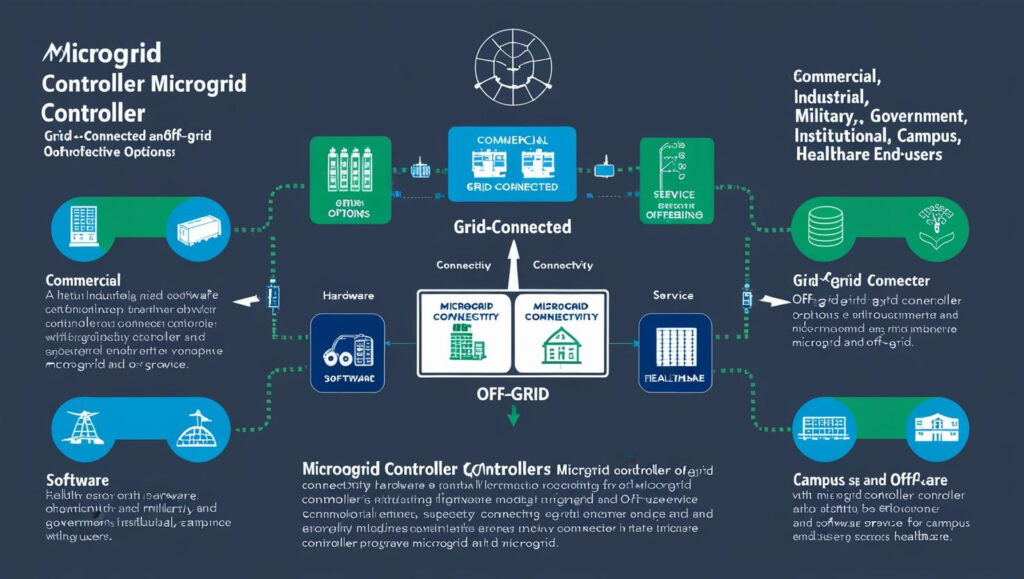The increasing shift toward sustainable and decentralized energy systems has led to significant advancements in microgrid technology. At the heart of this transformation is the microgrid controller, a critical component that manages energy generation, distribution, and storage within a microgrid. By optimizing power flow and integrating renewable energy sources, microgrid controllers ensure energy efficiency, reliability, and resilience.
While the microgrid controller market is experiencing rapid growth, it also faces several challenges that must be addressed to unlock its full potential. This article explores the key challenges hindering market expansion and the growth opportunities that could shape its future.
Download PDF Brochure @ https://www.marketsandmarkets.com/pdfdownloadNew.asp?id=103650618

Key Challenges in the Microgrid Controller Market
1. High Initial Investment Costs
One of the biggest barriers to widespread adoption is the high capital expenditure (CAPEX) associated with microgrid deployment. Microgrid controllers, along with energy storage systems and other infrastructure, require significant upfront investment, which can deter small and medium-sized enterprises (SMEs) and developing regions from adopting this technology.
2. Integration with Existing Power Grids
Microgrid controllers must work seamlessly with centralized power grids while ensuring energy independence. However, technical complexities in integrating distributed energy resources (DERs) with traditional power infrastructure create challenges in maintaining grid stability and avoiding power disruptions.
3. Cybersecurity Risks
As microgrid controllers increasingly rely on IoT, AI, and cloud-based systems, they become vulnerable to cyber threats. A cyberattack targeting a microgrid could compromise energy availability, leading to economic and operational losses. Strengthening cybersecurity measures and developing robust data encryption solutions is crucial for ensuring market growth.
4. Regulatory and Standardization Issues
Different regions have varying regulatory frameworks governing energy production, distribution, and pricing. The lack of a universal standard for microgrid controllers complicates implementation and limits market expansion. Establishing global regulatory standards can encourage wider adoption and smoother deployment of microgrid technologies.
5. Limited Awareness and Skilled Workforce
Despite the benefits of microgrid controllers, limited awareness among consumers, industries, and policymakers slows market adoption. Additionally, operating and maintaining microgrid controllers requires a highly skilled workforce, which is in short supply in some regions. Investment in training programs and knowledge-sharing initiatives is necessary to bridge this gap.

Growth Opportunities in the Microgrid Controller Market
1. Expansion of Renewable Energy Projects
With global efforts to reduce carbon emissions, governments and private sectors are investing heavily in solar, wind, and hybrid renewable energy systems. Microgrid controllers play a vital role in integrating and optimizing these energy sources, creating huge market opportunities.
2. Rising Demand for Energy Resilience and Reliability
The increasing frequency of power outages due to extreme weather, natural disasters, and grid failures has highlighted the importance of microgrids. Microgrid controllers provide uninterrupted power supply, making them essential for hospitals, data centers, military bases, and industrial plants. The growing focus on energy security will continue to drive market growth.
3. Smart Grid and IoT Integration
The rise of smart grids and IoT-enabled energy management systems is boosting demand for intelligent microgrid controllers. Advanced AI-powered controllers can predict energy demand, automate power distribution, and enhance grid performance, making microgrid solutions more efficient and attractive.
4. Government Incentives and Policies
Many governments worldwide are offering subsidies, tax benefits, and grants to promote clean energy solutions, including microgrid projects. Supportive policies aimed at decentralized energy systems and rural electrification are expected to accelerate the adoption of microgrid controllers.
5. Growth in Electric Vehicle (EV) Infrastructure
The expanding EV charging infrastructure presents a new opportunity for microgrid controllers. These controllers can balance energy loads, optimize charging schedules, and ensure efficient energy distribution, contributing to sustainable mobility solutions.
6. Technological Innovations in Energy Storage
Advancements in battery storage technology, such as lithium-ion, flow batteries, and hydrogen storage, are enabling better energy management within microgrids. Improved storage solutions will enhance the effectiveness of microgrid controllers, further fueling market expansion.
Future Outlook of the Microgrid Controller Market
The microgrid controller market is poised for significant growth, driven by the increasing adoption of renewable energy, energy resilience initiatives, and technological advancements. The microgrid controller market size is expected to reach USD 18.7 billion by 2029 from USD 6.8 billion in 2024, growing at a CAGR of 22.6% between 2024 to 2029.
As innovations in AI, blockchain, and cybersecurity continue to enhance microgrid performance, the market will see broader adoption across industrial, commercial, and residential applications. However, addressing cost barriers, regulatory challenges, and cybersecurity risks will be crucial to ensuring long-term success and sustainability.
Despite the challenges, the microgrid controller market holds immense potential in shaping the future of energy management. The growing need for decentralized, efficient, and resilient energy systems will continue to drive demand for advanced microgrid controllers.